177. Museum of Decorative and Applied Art
The Museum of Decorative and Applied Art is a relatively obscure art and antique museum that is affiliated with the "School of Art and Design after A.L.Stieglitz". It is located on the east side of the Fontanka River, across from the Summer Garden. The school and museum were founded in 1878 by Russian financier Alexander von Stieglitz, and the museum was at one time a branch of the Hermitage. The detailed history of this institution is interesting, as it parallels the social and political history of Russia during the last 140 years.
The building was designed in the Neo-Rennaissance style, and the interior decorations are spectacular. Most of the wall and ceiling paintings were damaged during the first half of the twentieth century; restoration work began decades ago and is still ongoing. The museum displays a variety of antiques and decorative artworks from the sixteenth through nineteenth centuries, and several galleries contain contemporary paintings and sculpture. The collections (and the building itself) are intended to be used as inspiration for Academy students, whose output is available for purchase when you enter the building (not at a discounted price). I saw a few students sketching the architectural design elements of the central hall while I was there.
Information on the internet indicates that until recently, this museum was closed to individual visitors and accessible only to students of the school or to official tour groups. This policy must have changed recently, because I had no trouble gaining admission on my own. I did have to ask a security guard to take me into the central hall, which was otherwise off-limits behind a locked gate and closed to solo tourists. This museum is far off the normal tourist path, but hopefully its profile will continue to grow. The collections and exhibits are modest as compared with the more prominent museums in the city, but the building itself is definitely worth a look.
The restoration work continues:
Two galleries include contemporary painting and sculpture:
More building interiors, antiques, and decorative art from the 1500s-1800s:
The magnificent central hall:
More art and several of the ceiling paintings:
Paintings from the school's students available for sale in the entrance hall:
The building was designed in the Neo-Rennaissance style, and the interior decorations are spectacular. Most of the wall and ceiling paintings were damaged during the first half of the twentieth century; restoration work began decades ago and is still ongoing. The museum displays a variety of antiques and decorative artworks from the sixteenth through nineteenth centuries, and several galleries contain contemporary paintings and sculpture. The collections (and the building itself) are intended to be used as inspiration for Academy students, whose output is available for purchase when you enter the building (not at a discounted price). I saw a few students sketching the architectural design elements of the central hall while I was there.
Information on the internet indicates that until recently, this museum was closed to individual visitors and accessible only to students of the school or to official tour groups. This policy must have changed recently, because I had no trouble gaining admission on my own. I did have to ask a security guard to take me into the central hall, which was otherwise off-limits behind a locked gate and closed to solo tourists. This museum is far off the normal tourist path, but hopefully its profile will continue to grow. The collections and exhibits are modest as compared with the more prominent museums in the city, but the building itself is definitely worth a look.
The restoration work continues:
Two galleries include contemporary painting and sculpture:
More building interiors, antiques, and decorative art from the 1500s-1800s:
The magnificent central hall:
More art and several of the ceiling paintings:
Paintings from the school's students available for sale in the entrance hall:
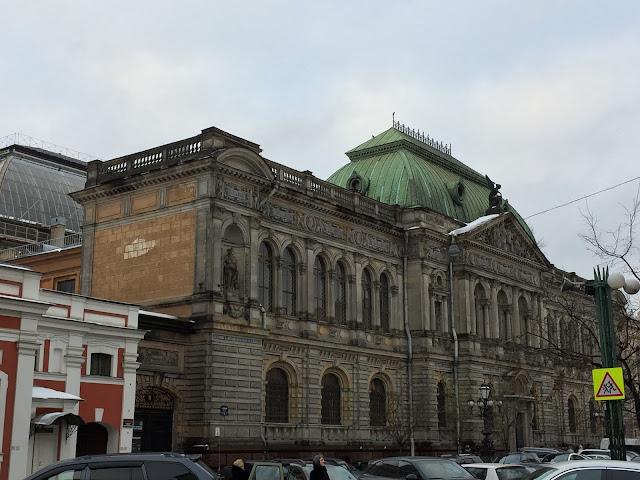

















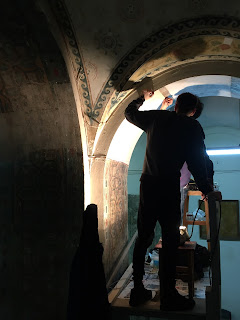






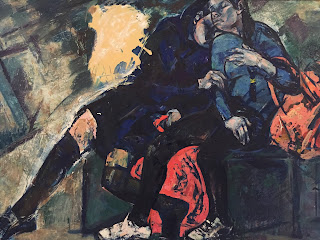






















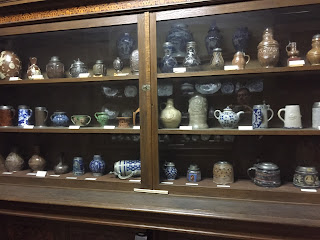


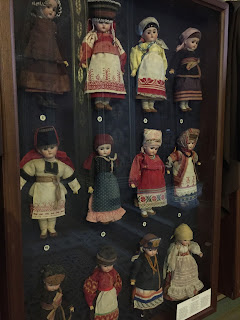

































Comments
Post a Comment